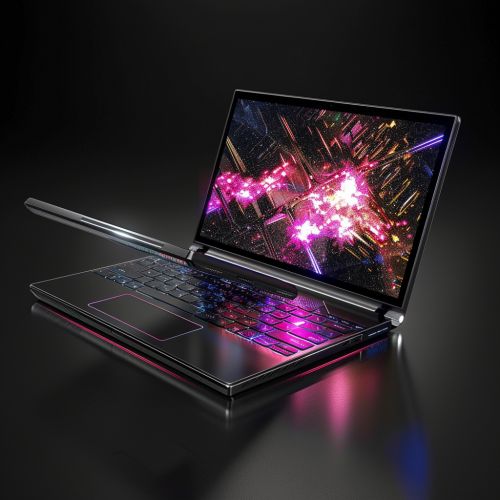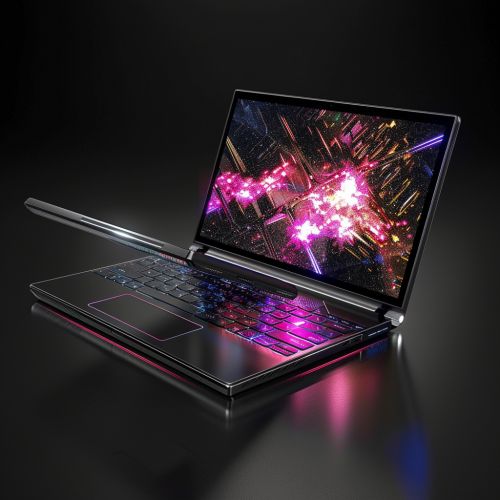Grid Compass
Introduction
The Grid Compass, also known as the GRiD Compass, is a pioneering laptop computer designed by British industrial designer Bill Moggridge in 1979 and released by GRiD Systems Corporation in 1982. It is widely recognized as one of the first portable computers and is notable for its innovative design, which laid the groundwork for future laptop development.
Design and Development
The Grid Compass was conceived during a time when computers were predominantly large, stationary devices. Bill Moggridge's vision was to create a portable computer that combined functionality with a sleek, modern design. The result was a clamshell design with a flat-panel display, which became a hallmark of laptop computers.
The Grid Compass featured a magnesium alloy case, which provided durability while keeping the device lightweight. It also included an electroluminescent display, which was a significant advancement over the cathode-ray tube (CRT) displays commonly used at the time. The display had a resolution of 320x240 pixels, which was quite advanced for its era.
Technical Specifications
The Grid Compass was equipped with an Intel 8086 microprocessor, which operated at a clock speed of 8 MHz. It had 256 KB of bubble memory, a type of non-volatile memory that retained data even when the power was turned off. This was a crucial feature for a portable device, as it ensured data persistence without the need for continuous power.
The operating system used by the Grid Compass was GRiD-OS, a proprietary system developed by GRiD Systems Corporation. This operating system was tailored to the hardware of the Grid Compass, providing efficient performance and a user-friendly interface.
Impact and Legacy
The Grid Compass had a significant impact on the development of portable computing. Its innovative design and advanced features set a new standard for what a portable computer could be. The clamshell design, in particular, became a defining characteristic of laptops and is still used in modern designs.
One of the most notable uses of the Grid Compass was by NASA, which employed the device on the Space Shuttle missions. The durability and reliability of the Grid Compass made it an ideal choice for the harsh conditions of space travel. This usage underscored the device's robustness and advanced capabilities.
Market and Commercial Use
Despite its advanced features and innovative design, the Grid Compass was not a commercial success in the consumer market. Its high price, which was around $8,000 at the time, made it inaccessible to the average consumer. However, it found a niche market among government agencies and large corporations, which valued its portability and advanced features.
The Grid Compass was particularly popular in military and aerospace applications, where its rugged design and reliable performance were highly valued. It was used by various branches of the U.S. military and other government agencies for field operations and data collection.
Technological Innovations
The Grid Compass introduced several technological innovations that influenced the development of future portable computers. One of the most significant was the use of bubble memory, which provided a reliable and durable storage solution for portable devices. This technology, while eventually supplanted by more advanced storage solutions, demonstrated the importance of non-volatile memory in portable computing.
Another key innovation was the electroluminescent display, which offered better visibility and lower power consumption compared to CRT displays. This technology paved the way for the development of modern flat-panel displays, which are now standard in all portable computing devices.
Design Influence
The design of the Grid Compass had a lasting influence on the aesthetics and functionality of portable computers. The clamshell design, with its hinged screen and keyboard, became a standard feature in laptop design. This design not only protected the screen and keyboard when closed but also provided a compact and portable form factor.
The use of a magnesium alloy case in the Grid Compass also set a precedent for the use of lightweight and durable materials in laptop construction. This focus on durability and portability has continued to be a priority in laptop design, with modern devices often using advanced materials such as carbon fiber and aluminum.
Conclusion
The Grid Compass was a groundbreaking device that played a crucial role in the evolution of portable computing. Its innovative design, advanced features, and technological innovations set new standards for what a portable computer could be. While it may not have achieved widespread commercial success, its impact on the design and development of future laptops is undeniable.


